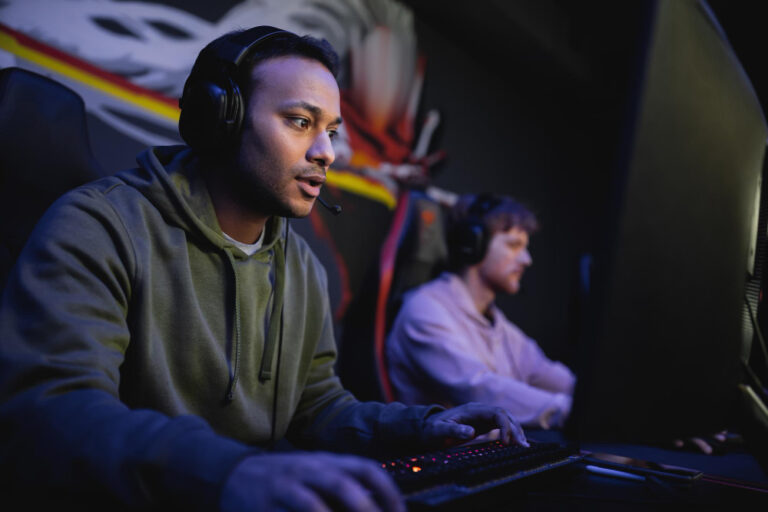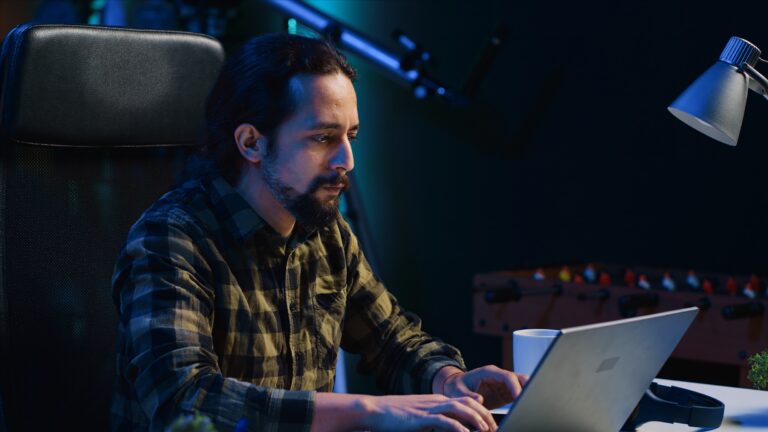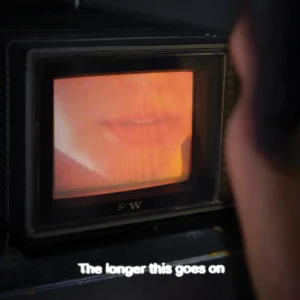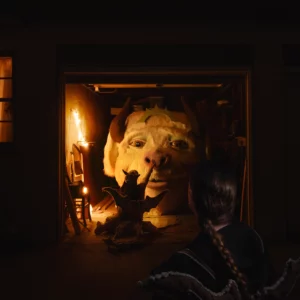Punishing Gray Raven continues to be one of the most exhilarating action combat mobile games available in 2025, with its lightning-fast gameplay and stylish combo-based mechanics demanding precision and quick reflexes. While touchscreen controls have improved over the years, many players find that using a controller provides a significant advantage in PGR’s challenging combat scenarios. The game’s intense action sequences, perfect dodge timing requirements, and complex combo systems all benefit tremendously from the tactile feedback and precision that only a gamepad can deliver.
Why Controller Support Matters in PGR
Punishing Gray Raven’s combat system is built around split-second decision making, precise dodges, and executing perfectly timed combos. The match-3 orb skill system combined with character-switching mechanics creates a depth of gameplay that can be difficult to master on touchscreens alone.
Many veteran players have discovered that controllers offer several key advantages:
- More precise character movement using analog sticks
- Faster reaction times for perfect dodges
- Improved combo execution with tactile buttons
- Less finger fatigue during extended play sessions
- A clearer view of the battlefield without fingers obscuring the screen
While mastering combat mechanics is key, optimizing your control method also improves your experience. In addition, investing in characters, skins, or resources is also an important way to improve the gaming experience. I happen to know a platform, Lootbar, which can provide a suitable price for your PGR top up. Then you can get game items and resources at a cheaper price. It’s worth a try.
Does Punishing Gray Raven Support Controllers Natively?
Yes, Punishing Gray Raven offers native controller support across all its platforms. Since its initial release, Kuro Game has continuously improved gamepad compatibility, and in 2025, the experience is more polished than ever.
Platform-specific controller support:
| Platform |
Controller Support |
Notes |
| Android |
Full native support |
Works with most Bluetooth controllers |
| iOS |
Full native support |
Best with MFi-certified controllers |
| PC |
Full native support |
Works with most USB and Bluetooth controllers |
The game officially supports Xbox controllers (Series X/S and Xbox One), PlayStation controllers (DualSense and DualShock 4), and numerous third-party gamepads like the Backbone One, Razer Kishi, and 8BitDo controllers.
The experience differs significantly between touchscreen and controller play. While touchscreens offer direct interaction with the Orb system, controllers provide better movement precision and combo execution. Many top-ranked players in War Zone and Phantom Pain Cage competitions now use controllers for their reliability in high-pressure situations.
How to Connect a Controller to PGR (Platform-Specific Guide)
For Android Devices
Bluetooth Connection:
o Enable Bluetooth on your Android device
o Put your controller in pairing mode
o Select the controller from your Bluetooth devices list
o Launch PGR and the game should automatically detect your controller
USB OTG Connection:
o Connect your controller using a USB OTG adapter
o Android should automatically recognize the controller
o Launch PGR for immediate controller functionality
Tip: Some Android devices may require you to enable ‘USB debugging’ in developer options for wired controllers to work properly.
For iOS Devices
Supported Models:
o iPhone X and newer models work best with controllers
o iPad Pro, Air, and Mini models from 2019 onwards
o iOS/iPadOS 16.0 or higher is recommended for optimal performance
Connection Steps:
o Put your controller in pairing mode
o Go to Settings > Bluetooth on your iOS device
o Select the controller from the available devices
o Once paired, launch PGR, and the controller will be recognized
Note: The iOS version of PGR in 2025 has enhanced controller support, with special optimization for the Backbone One controller.
For PC (Emulator Method)
If you’re playing on PC using an emulator:
BlueStacks Setup:
o Connect your controller before launching BlueStacks
o Enable gamepad controls in BlueStacks settings
o Launch PGR and verify controller detection
o Use the ‘Start’ button to toggle between cursor control and gameplay
LDPlayer Setup:
o Connect your controller via USB or Bluetooth
o Open LDPlayer settings and navigate to the ‘Game Control’ tab
o Enable controller support and customize your mapping
o Launch PGR and test your controls
Controller Button Layout & Customization
The default controller layout for PGR has been refined over the years to provide intuitive access to all combat functions:
- Left Stick: Character movement
- Face Buttons: Basic attack (A/X), Dodge (B/O), Ultimate (Y/Triangle)
- Shoulder Buttons: Orb skills execution (from right to left)
- Triggers: Additional orb skills or character switching
- D-pad: Menu navigation and item selection
The 2025 version of PGR includes enhanced button remapping options, allowing players to customize their control scheme based on personal preference. To access these settings:
- Navigate to Settings > Controls > Controller Settings
- Select “Button Mapping” to customize your layout
- Save your profile for quick switching between different setups
For fluid combo execution, many top players recommend the following optimizations:
- Assign dodge to a shoulder button for faster reaction time
- Place frequently used orb skills on easily accessible buttons
- Configure character switching to triggers for quick team rotations
Advantages of Using a Controller in PGR
The benefits of using a controller for Punishing Gray Raven have become increasingly apparent as the game has evolved with more challenging content in 2025:
Better Reaction Time for Perfect Dodges
The tactile feedback of controller buttons provides immediate response for executing perfect dodges, which are crucial for activating Matrix (slow-motion) effects during combat. Many players report a significant improvement in their dodge timing when switching from touchscreen to controller.
Easier to Chain Attacks and Switch Characters
Controllers allow for smoother transitions between basic attacks, orb skills, and character switching. This fluidity is essential for maximizing damage output in the latest boss fights and competitive modes.
Less Screen Clutter Compared to Touch Controls
With no fingers obscuring your view, you can see the entire battlefield clearly, making it easier to track enemy movements, dodge incoming attacks, and position your character optimally.
Enhanced Comfort During Long Play Sessions
The ergonomic design of modern controllers reduces hand fatigue during extended play sessions, which is particularly valuable for endgame content like Babel Tower and the new Abyss modes introduced in 2025.
Limitations and Known Issues with Controller Support
Despite significant improvements, there are still some limitations to be aware of:
Occasional Input Lag: Some Bluetooth controllers may experience slight input delay on certain devices, which can affect timing-sensitive actions.
Limited UI Navigation: While combat controls work flawlessly, some menu navigation and special event interfaces may still require touchscreen interaction.
Compatibility Issues: Older or less common controller models might experience compatibility problems, particularly with the iOS version.
Emulator Variability: Performance can vary significantly when playing on PC emulators, with some combinations of emulator versions and controllers working better than others.
Final Thoughts – Smooth Controls, Smoother Gameplay
The evolution of controller support in Punishing Gray Raven has transformed how many players experience the game. The difference is particularly noticeable in high-difficulty content like Babel Tower, War Zone, and the new Crimson Abyss mode introduced in early 2025.
Platform-specific differences still exist, with PC emulation offering the most customization options, iOS providing the most seamless experience with newer controllers, and Android offering the broadest compatibility with various gamepad models.
If you’re serious about climbing the competitive rankings or tackling the most challenging content, investing time in mastering controller play will yield significant returns. The precision and comfort advantages simply can’t be matched by touchscreen controls alone.








 Hushed, gorgeous, and warmly elusive, Alex G’s major label debut is a high watermark in a career full of them. There’s still a treasure trove of childhood memories for the singer-songwriter to dig up, to try and bridge the disparate pieces and fill the missing ones. “I’ve searched far and wide/ For a place like this/ Now I can close my eyes,” he sings at one point on
Hushed, gorgeous, and warmly elusive, Alex G’s major label debut is a high watermark in a career full of them. There’s still a treasure trove of childhood memories for the singer-songwriter to dig up, to try and bridge the disparate pieces and fill the missing ones. “I’ve searched far and wide/ For a place like this/ Now I can close my eyes,” he sings at one point on 



 It took three years after Forth Wanderers dissolved in 2018 for the question of making music again to arise. “It felt like there wasn’t as much riding on the band,” guitarist Ben Guterl said in press materials. “We all felt free to mess around and have fun.” The Longer This Goes On is playful, tuneful, and riveting, experimenting with the edges of the band’s sound. “We had more fun with style and testing what we could get away with, whether it’s bluesy, country, slower, or darker; whatever sounded good,” vocalist Ava Trilling added.
It took three years after Forth Wanderers dissolved in 2018 for the question of making music again to arise. “It felt like there wasn’t as much riding on the band,” guitarist Ben Guterl said in press materials. “We all felt free to mess around and have fun.” The Longer This Goes On is playful, tuneful, and riveting, experimenting with the edges of the band’s sound. “We had more fun with style and testing what we could get away with, whether it’s bluesy, country, slower, or darker; whatever sounded good,” vocalist Ava Trilling added. The Seattle-based trio of singer and bassist Lena Farr-Morrissey, guitarist Sam Fason, and drummer Cam Hancock have come through with their debut album,
The Seattle-based trio of singer and bassist Lena Farr-Morrissey, guitarist Sam Fason, and drummer Cam Hancock have come through with their debut album,
 Cassie Wieland fleshes out her sound on her debut full-length as Vines,
Cassie Wieland fleshes out her sound on her debut full-length as Vines,  Billie Marten has released a new album,
Billie Marten has released a new album,  Madeline Kenney has followed up 2023’s A New Reality Mind with a new LP,
Madeline Kenney has followed up 2023’s A New Reality Mind with a new LP,  DJ Haram has dropped her debut album,
DJ Haram has dropped her debut album, 

